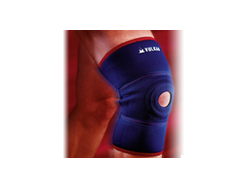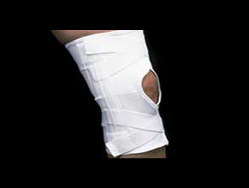Introduction to Knee Pain
Introduction to Knee Pain
Patello-femoral pain can occur in one or both knees and it is one of the most common causes of knee pain. Patello-femoral pain is felt in the front of the knee and occurs when the patella is compressed against the femoral groove. The compression forces causes the the knee to bend further and as a result pain usually increases as well.
Symptoms of Knee Pain
Therefore, patello-femoral pain can be aggravated by activities that involve repetitive bending of the knee. Pain is often felt going up or down stairs or after sitting for long periods of time. Knee pain can be accompanied by "clicking" or "grinding" and sometimes by a feeling that the knee "catches" or wants to "give way".
Cause of Knee Pain
Patello-femoral pain describes the location of the pain but not its cause. Overuse ("too much, too soon") or previous injury to the knee are common causes of knee pain. Biomechanical factors such as poor tracking of the patella in the femoral groove, flat (pronated) feet, weak inner thigh muscles and tight outer thigh muscles and/or ligaments can also cause patellofemoral pain. Sometimes "wear and tear arthritis" (osteoarthritis) or damage to the articular cartilage (chondromalacia) on the back of the patella causes the pain but in most cases of patellofemoral pain the knee joint is normal.
What your Podiatrist will do
Examination techniques that detect biomechanical problems are helpful in the diagnosis of patellofemoral pain. X-rays are often done to assess the shape of the patella and to rule out osteoarthritis of the knee. Rarely are other tests such as Magnetic Resonance Imaging (MRI) required.
The treatment of patellofemoral pain depends on it's cause and may include stretching and strengthening exercises, relative rest, icing, medication, foot orthotics and bracing. In rare cases surgery is required. Doctors and physiotherapists trained in treating patellofemoral pain can outline a treatment plan specific to each individual. Treatment of this condition initially involves rest, ice therapy, anti-inflammatory medications and taping.




 Dr Foot Recommends
Dr Foot Recommends



 Excellent medial and lateral support ideal for gymnasts and footballers. This wraparound design knee brace is suitable for cases of knee instability due to knee ligament injuries. Extremely effective in relieving knee pain by taking the stress off knee ligaments that may be injured. *Perfect for injuries to the Medial Collateral Ligament (MCL) or Lateral Collateral Ligament (LCL).
Excellent medial and lateral support ideal for gymnasts and footballers. This wraparound design knee brace is suitable for cases of knee instability due to knee ligament injuries. Extremely effective in relieving knee pain by taking the stress off knee ligaments that may be injured. *Perfect for injuries to the Medial Collateral Ligament (MCL) or Lateral Collateral Ligament (LCL).















